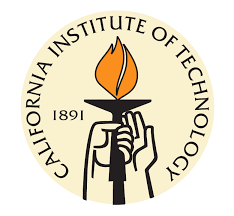Part 1 of 3 Parts
Collecting solar energy in space and beaming it back to Earth has been discussed in science fiction novels and movies for decades. Serious engineering studies have taken place to specify what technologies would be necessary to accomplish such solar energy beaming. If it can be shown to be technically feasible, it would provide a global supply of clean and affordable energy. Now it seems that solar energy beaming is moving from the realm of science fiction to science fact.
Through the Space-based Solar Power Project (SSPP), a team of California Institute of Technology (Caltech) researchers is working to deploy a constellation of modular spacecraft. These satellites will collect sunlight, transform it into electricity and then wirelessly transmit that electricity to wherever it is needed on Earth. They could send electricity to remote locations which currently have no access to reliable energy.
Harry Atwater is an SSPP researcher and Otis Booth Leadership Chair of Caltech’s Division of Engineering and Applied Science. He said, “This is an extraordinary and unprecedented project. It exemplifies the boldness and ambition needed to address one of the most significant challenges of our time, providing clean and affordable energy to the world.”
Atwater is also the Howard Hughes Professor of Applied Physics and Materials Science. He leads the project jointly with two other researchers. One other leader is Ali Hajimiri, Bren Professor of Electrical Engineering and co-director of SSPP. The other leader is Sergio Pellegrino who is Joyce and Kent Kresa Professor of Aerospace and Civil Engineering, co-director of SSPP, and a senior research scientist at the Jet Propulsion Laboratory (JPL).
In order to harness solar power from space, there must be breakthroughs advances in three main areas.
First, Atwater’s research group is working on the design for ultralight high-efficiency photovoltaics (materials that convert light into electricity). These new solar cells must be optimized for space conditions and compatible with an integrated power conversion and transmission system.
Second, Hajimiri’s research group is developing the low-cost and lightweight technology required to convert direct current power to radio frequency power such as that used to transmit cell phone signals. Then, the converted power must be beamed to Earth as microwaves. Hajimiri says that the process is safe. The non-ionizing radiation is significantly less harmful that direct sunlight falling on the same area. The system will be able to be turned off if there is damage or malfunction.
Third, Pelligrino’s researchers are working on inventing foldable, ultrathin, and ultralight space structures to support the photovoltaics as well as the components necessary to convert, transmit, and steer radio frequency power to where it can be used on Earth.
The basic unit of the system the researchers are working on consists of a four inch by four inch tile that weighs less than a tenth of an ounce. Hundreds of thousands of these tiles would combine into a flying-carpet like satellite that, once deployed, would create a sunlight-gathering surface that measures three and a half square miles.
Work on the SSPP has been supported by over one hundred million dollars in funding from Donald Bren who is the chairman of the Irvine Company and a life member of the Caltech community. His wife is a Caltech trustee who is also supporting this funding. The Northrup Grumman Corporation provided funding for the initial feasibility studies.
Please read Part 2 next
